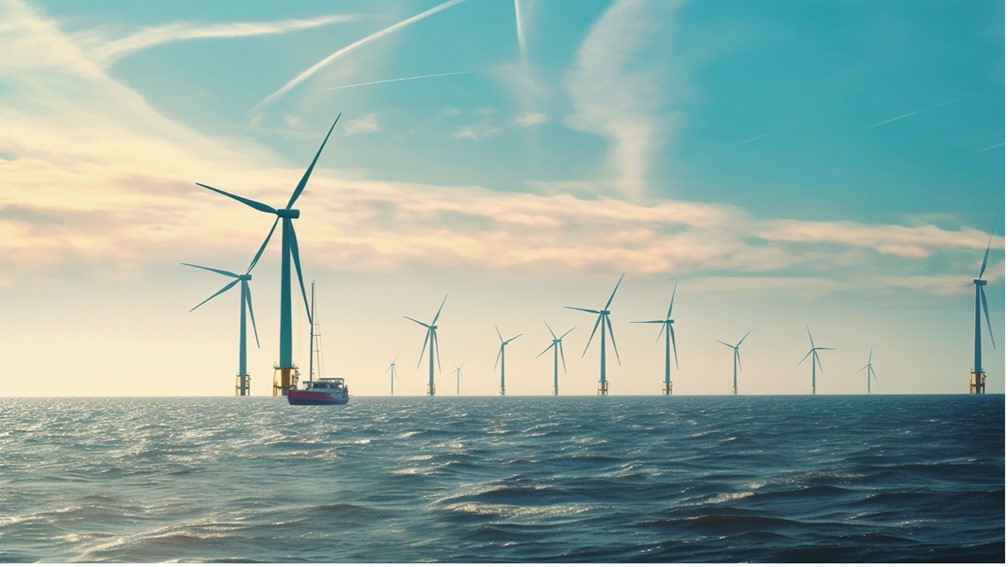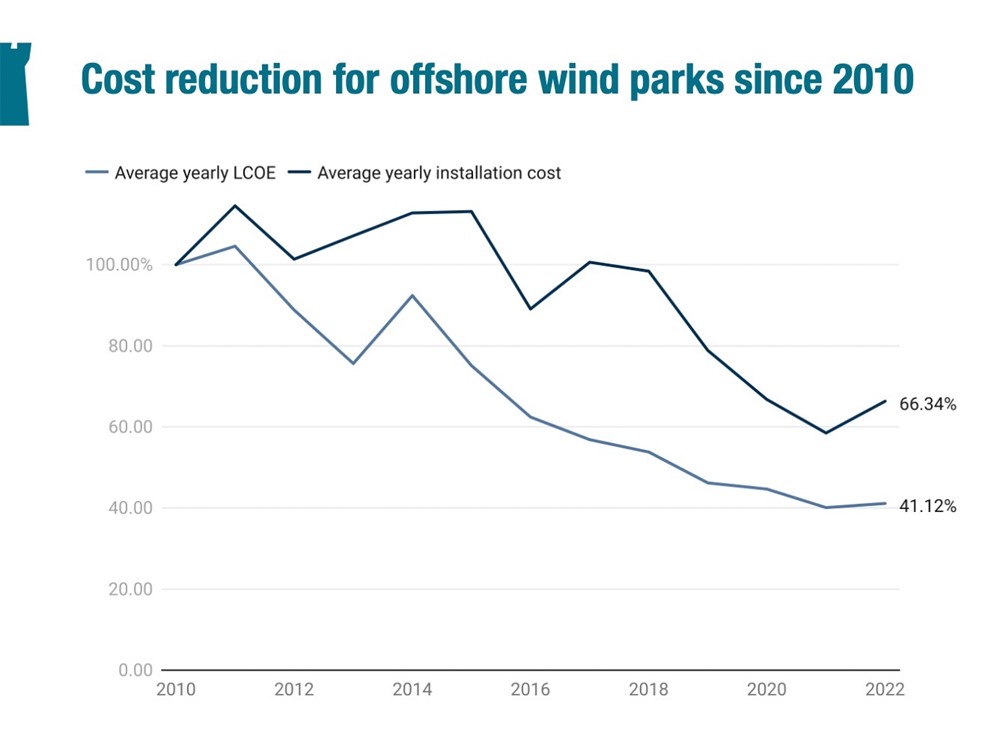Toon has a Master’s Degree in Civil Engineering (major in Energy) from the KU Leuven. He completed a 6 month internship as Derivates Analist. He work as a Junior Climate Consultant for Econopolis Climate and works on advisory projects related to climate & energy. Toon is also founder of Stroomloop, a unique trailrunning experience.
The Changing Landscape of Offshore Wind Energy: Analyzing LCOE Trends and Cost Structures

Recent developments in the wind energy sector have raised questions about the competitiveness of offshore wind power, with industry giants like Siemens Gamesa and Orsted Energy facing challenges, and the UK's largest offshore wind tender drawing no participants. In this blog post, we delve into the evolving landscape of offshore wind energy by analyzing the Levelised Cost of Electricity (LCOE) and its implications for investors and policymakers.
LCOE, or Levelised Cost of Electricity, is a critical metric for assessing the economic viability of energy production technologies. It encapsulates various factors, including initial investment, operational costs, borrowing costs, and a fair return on investment from the investor. By comparing LCOEs, we gain insights into the competitiveness of different energy assets. Simply put, the lower the LCOE, the more attractive the investment, as it requires a lower electricity price to be financially rewarding.
Over the past decade, offshore wind energy has seen a remarkable transformation in LCOE. Between 2010 and 2022, the global weighted average LCOE for offshore wind plummeted by an astonishing 59%. This remarkable cost reduction can be attributed to the concept of learning rates, wherein the industry's global installed capacity surged from 3.1 GW to 63.2 GW during the same period. However, in 2022, the LCOE for offshore wind in Europe witnessed an 18% year-on-year increase, marking a notable departure from the declining trend seen in previous years.

Figure 1: Source: IRENA
Several factors underpin the changing LCOE dynamics of offshore wind:
- Increasing Farm Size: Offshore wind farms have undergone a significant transformation. In 2022, the average farm size skyrocketed to 468 MW, compared to the modest 25 MW in the past. This shift in scale has implications for both cost structure and efficiency, and allowed the LCOE for offshore wind to drop dramatically the last ten years.
- Deeper Waters and Greater Distances: Offshore wind projects have ventured into deeper waters and are now located further from the shore, averaging 32 meters in water depth and 27 kilometers from the coastline. This shift necessitates more substantial investments in foundations and interconnection infrastructure. Fortunately, installation costs have decreased thanks to specialized offshore installation vessels. The consequence of this evolution is that the foundation and installation cost of the farms take up a larger share of the total investment cost, making the project more vulnerable for price hikes in vessel rates or raw materials such as steel.
- Inflationary Pressure and Rising Interest Rates: Recent increases in wind energy prices are attributed to inflationary pressures and rising interest rates. These factors impact material costs for turbines and foundations, reversing the trend of these components becoming a smaller part of the overall project cost. Additionally, higher interest rates significantly affect borrowing costs, particularly given the multi-billion-dollar nature of wind farm projects.
While offshore wind energy costs remain significantly lower than they were in 2010, it is crucial for policymakers to consider the impact of inflation when designing subsidy mechanisms. As project developers evaluate the risks associated with rising costs, it may be prudent to reassess the reference price for subsidies and potentially increase price caps on existing mechanisms, ensuring that they are adjusted for inflation.
The offshore wind energy sector is in a state of flux, with evolving LCOE trends and cost structures shaping its future. While recent price hikes have raised concerns, the industry has come a long way, with costs still well below historic highs. Looking forward, there's a promising landscape of advancements within the industry, encompassing experimentation with floating structures, synergies with floating PV, and considerations for integrating with other energy sources. These factors emphasize that offshore wind is here to stay, offering a multifaceted solution to our energy needs. Policymakers must strike a delicate balance between fostering continued growth in offshore wind and mitigating inflationary risks to ensure the sector's sustainable development in the years to come.
